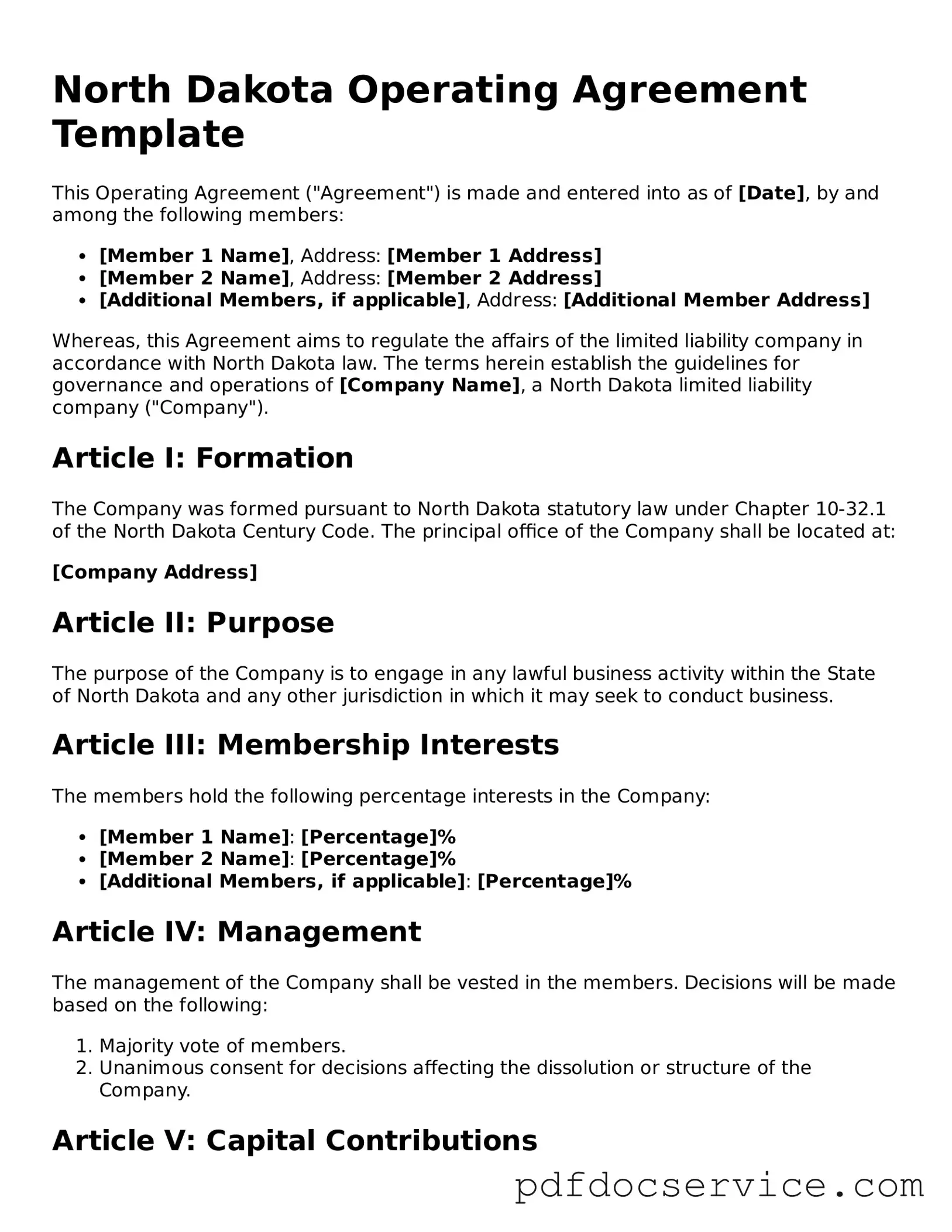Printable Operating Agreement Template for North Dakota
The North Dakota Operating Agreement form is a legal document that outlines the management and operational procedures for a limited liability company (LLC). This agreement details the rights and responsibilities of members, ensuring clarity in decision-making processes. By establishing these guidelines, the form helps protect the interests of all parties involved.
Open Operating Agreement Editor
